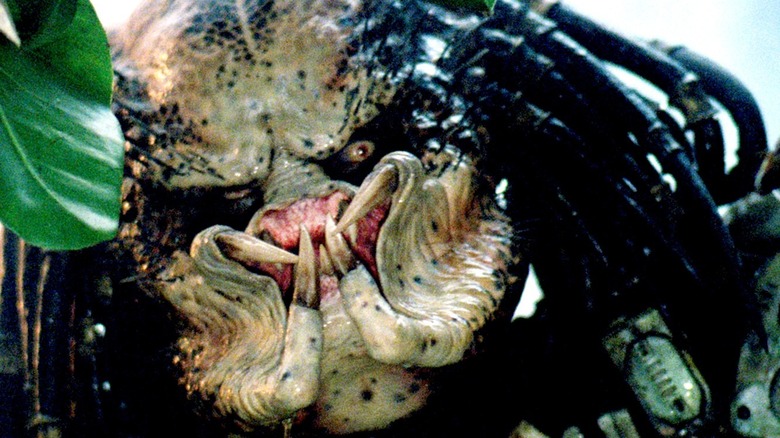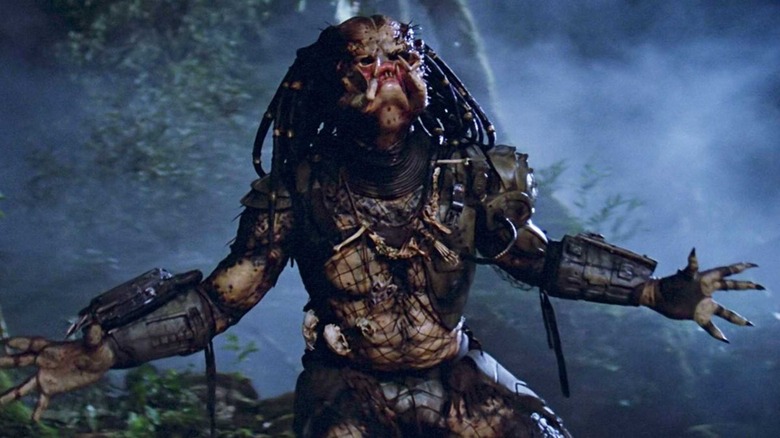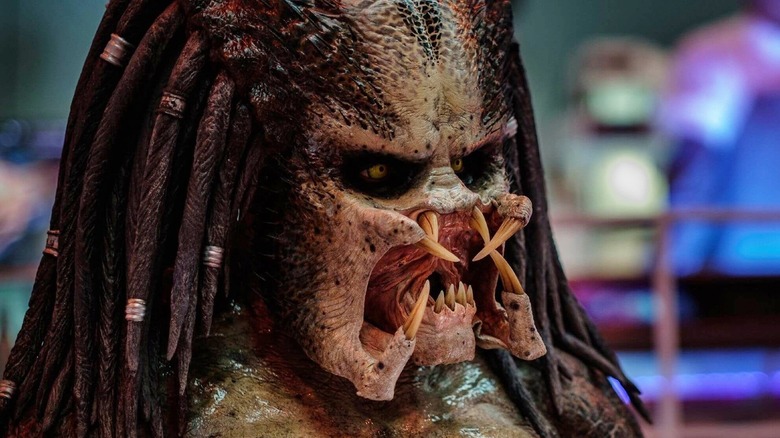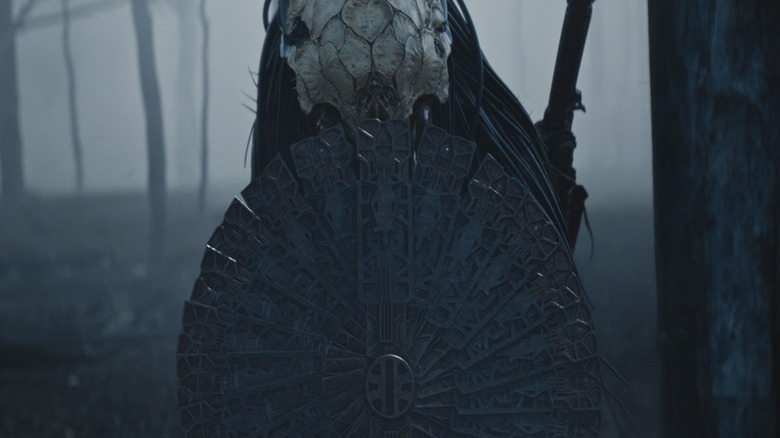The Predator's Most Famous Feature Came From The Mind Of James Cameron
Dutch had it right when he told the Predator, "You're one ugly motherf*****." Even if you haven't seen any of "The Predator" films, you probably know what the extraterrestrial hunter looks like. The alien's anatomy is designed to be distinctive, frightening, and memorable even to the most casual of sci-fi/horror audiences. So much so that, aside from some minor detail changes here and there, the design has stood the test of time.
The Predator species, or the Yautja if you want to get fancy, are the living embodiment of their hunter status. You won't catch them knitting by a fire or living a life of leisure. No, these guys are only invested in the thrill of the chase and — inevitably — the kill. Given how hunting would have impacted the development of the species as a whole, especially a species that seeks out the finest hunters each planet has to offer, one question pops up almost instantly: How does the hunt influence the Predator's physiology?
Let's get physical
Let's break down the body structure of the Predator. These creatures generally possess a height that could crush the hopes and dreams of a person with a deeply rooted Napoleon complex. Seriously, shorties, you do not want to attempt to tackle this thing. They are bipedal (aka they walk on two legs), which enables them to chase, hide, and maneuver in the same way that us humans would generally do if hunting for prey in the wild. Bipedal also means they are easier to trip, so that's something to keep in mind for anyone who needs to survive against this thing!
Framing the Yautja's "delicate" faces are what we'd refer to as dreadlocks. While they can be fun to look at, their hair also adds more height to their already gigantic physique. Are you intimidated yet? If for some godforsaken reason you aren't, don't worry: The infamous mandibles that hang off the lower portion of their face will make you cower in fear. From a general observation, these mandibles are the best way for The Predator to convey emotion and to bite things. Once they open those things up, though, all bets are off. Just run.
The Predator's mandibles weren't originally a part of this lovely creature's design. We have a famous director to blame for why the creature has those special little chompers.
James Cameron's contribution
Yes, director James Cameron gets the credit for those frightening mandibles. Special effects make-up artist Stan Winston was tapped to do the make-up effects for "The Predator," — and, as luck would have it, both Winston and Cameron, who had a working relationship from their time on Cameron's "Aliens," ended up on a flight together. As Winston shared with Total Film, this coincidence would end up influencing the design for decades to come:
"I was sketching concepts for the Predator. And Jim Cameron looked over to me and said, 'You know, I always wanted to see something with mandibles.'"
When James Cameron suggests something, it's hard not to immediately jump on that suggestion train — and boy Winston did jump. He added those mandibles into the design and, as many viewers have seen, the mandibles became one of the ways in which the Predator not only communicates, but also intimidates. You come across that thing in the wild and you see those things flare out at you, you are likely to want to drop in a ball and instantly get into the fetal position. Thanks to that one plane ride, film history was made.
What's next in Prey?
Now that we have a whole new installment to "The Predator" franchise coming out, it'll be interesting to see how much the creature's appearance will change. In the upcoming "Prey," viewers will be taken back roughly 300 or so years back in time in Earth's history. From an evolutionary standpoint, especially when it comes to the Yautja, there's some wiggle room for the special effects and costumes team to play around. Indeed, director Dan Trachtenberg told Time Out that he used the time setting as an opportunity to change up the Predator's look:
"I wanted [the Predator] to be scarier than we've seen it before. It's intelligent and it has advanced technology, and that makes it even more difficult to take on. But because the movie is set 300 years in the past, those things need to feel a little bit older than we've seen before."
One thing that isn't likely to change too much, though, is their general physiology. The height, the mandibles, the hair appendages; those distinctive physical traits being removed in any fashion might cause riots from fans. While the Predator was mostly cloaking in the last "Prey" trailer, there was a brief moment where we got to see its physical form. The familiar dreadlocks are back, though in a sleeker fashion this go-round. As Trachtenberg explained, "I wanted to make sure the head was more proportional to the body ... This Predator is much slimmer and less armored than it's ever been."
While not shown, one thing is for certain: Those species-defining mandibles will be back to terrify us once again. And, as we now know, it's all thanks to James Cameron, the man who continuously finds his way — accidentally or otherwise — towards all things alien in Hollywood.



